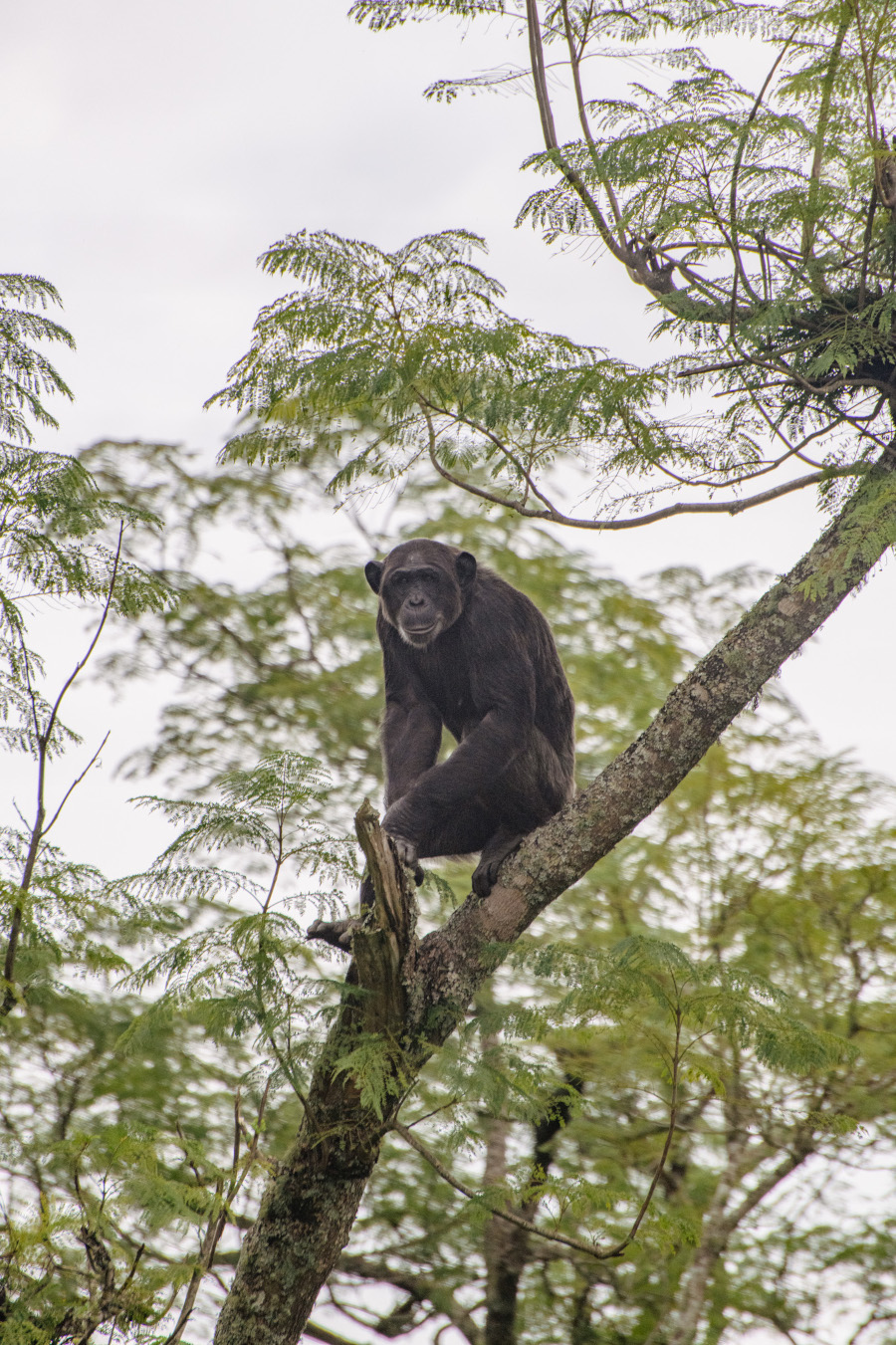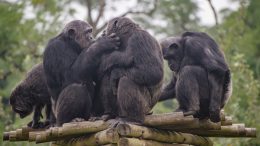Species name and description:
Chimpanzees (Pan troylodyte) are medium-sized primates with long arms, black or dark-brown hair, and bare skin on their faces, hands, and feet. Their facial features and physical characteristics vary from individual to individual, much as humans’ do, due to a rich genetic diversity that makes each chimpanzee truly unique.
Where they’re found:
Chimpanzees have four recognized subspecies, each native to different regions of Africa. These include:
-
- Central chimpanzee: Found mainly in Central African countries like the Congo Basin.
- Western chimpanzee: Native to West Africa.
- Eastern chimpanzee: Found in East African regions, including Uganda and Tanzania.
- Nigeria-Cameroon chimpanzee: Found in Nigeria and Cameroon.
IUCN Red List status:
Endangered — and the population is constantly decreasing.
Why they are at risk:
Chimpanzees, our closest relatives, are crucial for maintaining Central Africa’s diverse forests. However, all four subspecies are endangered due to habitat loss, disease, exploitation, and hunting for bushmeat or for animal trafficking. Their slow reproductive rate makes it hard for them to recover from these threats.
What you can do to help:
The most important tip is to educate yourself about this species. In doing so you equip yourself with the knowledge needed to inform, educate, and inspire others to take action. Once you’re informed you can become an advocate, helping others understand the challenges chimpanzees face and encouraging change.
A great way to contribute is by supporting and visiting organizations such as your local zoo, the Pan African Sanctuary Alliance, African sanctuaries like Chimp Eden (run by the Jane Goodall Institute), or U.S.-based sanctuaries that care for retired laboratory chimpanzees. These organizations work around the clock to ensure the chimpanzees in their care can live out the rest of their lives in peace and comfort.
My favorite experience:
One of my most meaningful experiences was choosing to center my master’s in photography project around volunteering and photographing my time at Chimp Eden, the chimpanzee sanctuary run by the Jane Goodall Institute in South Africa. I wanted to fully immerse myself in an environment dedicated to advocating for chimpanzees and helping those rescued from traumatic pasts.

Before arriving at the sanctuary, I conducted extensive research on primate behavior, personalities, diet, etc. I also reviewed existing photographic work to ensure my images would bring a new perspective rather than replicate what had already been done. My goal was to create original photographs that could be used to educate and inspire others wanting to learn about this species.
After returning to school, I curated an exhibition based on my experience at the sanctuary, using my work to share the stories of these incredible animals.
I continue to advocate for chimpanzees because, sadly, they cannot speak for themselves. As humans, it’s our responsibility to be their voice, to fight for their rights, protect their habitats, and work toward a future where they can live in peace and comfort.
Share your stories:
Do you live in or near a threatened habitat or community, or have you worked to study or protect endangered wildlife? You’re invited to share your stories in our ongoing features, Protect This Place and Save This Species.
Previously in The Revelator:
The Challenges of Studying (and Treating) PTSD in Chimpanzees


